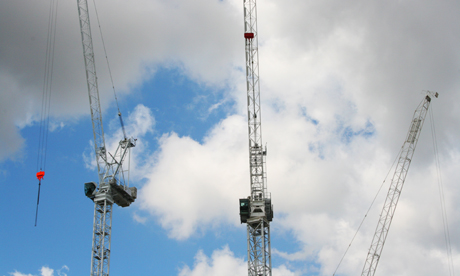Low carbon neighbourhoods ‘for next generation’

Cranes over Dalston
The low carbon future for Dalston and Hackney Central, the borough’s two major town centres, has been set out by the Council in two new masterplans, following consultation with residents, community groups and local businesses.
“The masterplans are designed to provide a 15 year direction for our growing town centres that are becoming more popular and more successful,” said Cllr Guy Nicholson, Cabinet Member for Regeneration and the 2012 Olympic and Paralympic Games.
“They aim to ensure Hackney Central and Dalston remain exciting, vibrant and creative places, attracting residents and visitors alike to enjoy Hackney’s diverse and eclectic offer.
“Our aspiration is to use the investment that comes with this growth to turn our two town centres into central London’s first low carbon town centres for the next generation.”
Last year, the Council submitted applications for Dalston and Shoreditch for the Mayor of London’s Low Carbon Zones scheme; however neither was successful.
The zones have a target to make carbon emissions savings 20.12 per cent by 2012 by bringing together local authorities, community organisations, residents, businesses and utilities to work together in a specific neighbourhood. These low carbon zones on average will reduce carbon emissions by over 23 per cent by 2012.
The Council was given positive feedback about its unsuccessful applications and its vision for borough, however: the application for Dalston was deemed a long-term capital investment project, as it would not have met 12.12% reductions by 2012 set out in the Mayor of London’s target for Low Carbon Zones.
The Shoreditch application specifically related to Cranston and Wenlock ‘green estates’ project which would have fitted all 700 flats with smart meters. However, the project was regarded as being too narrow in terms of scope.
The areas in the ten successful boroughs which won funding to become ‘low carbon zones’ are:
Barking Town Centre, Barking and Dagenham)
Muswell Hill, Haringey)
Archway, Islington)
Brixton, Lambeth)
Lewisham Town Centre, Lewisham
Wandle Valley, Merton)
Ham and Petersham, Richmond upon Thames
Peckham, Southwark
Hackbridge, Sutton
Queen’s Park, Westminster.
A Hackney Council spokesperson said, “The Council is currently developing a decentralised energy masterplan, with support from the London Development Agency, which will provide the underpinning evidence base for how we can best plan and set CO2 reduction targets for the two masterplan areas.”
The masterplans
According to the Council, the plans for Hackney Central and Dalston are designed to improve and guide growth and investment over the next 15 years, ensuring future development strengthens and reinforces their distinct characters.
The masterplans give an idea where new homes could be built, and where retail, hospitality, employment and community spaces could be developed. The proposals ensure that the distinct characters that exist in both town centres should be retained, and that new development must contribute to this character.
In Hackney Central the reopening of the old Hackney Central Station on the new London Overground is proposed, and plans to improve the Narrow Way and the wider town centre environment also feature.
In Dalston, a new green avenue is proposed around which a new high street is formed enabling Dalston to grow and increase its cultural and creative sectors alongside its role as a centre for retail and leisure activities.
Both masterplans include plans to improve routes in and around the town centres and to promote and support walking and cycling.
According to the Council, the two town centre masterplans were consulted on extensively and have been amended to reflect the feedback from the community. They have now been formally adopted as interim area action plans and will form a material consideration in the assessment of planning applications.
View the town centre interim area action plans for Dalston and Hackney Central.
Note: this story was amended on Friday 22 January.
